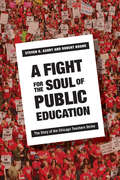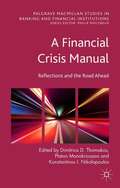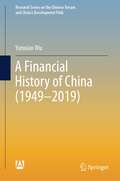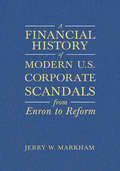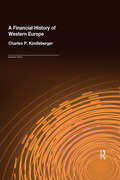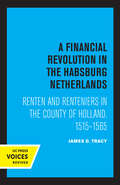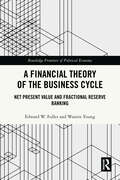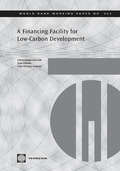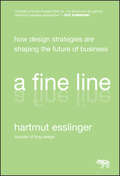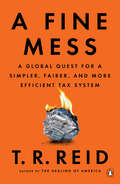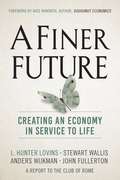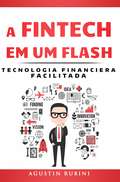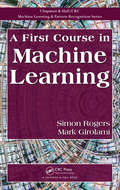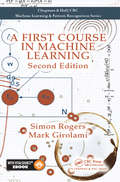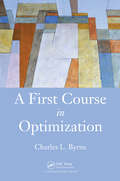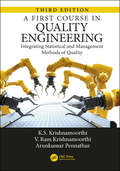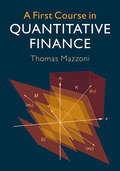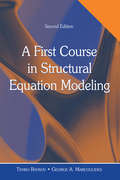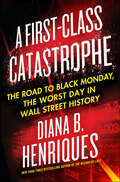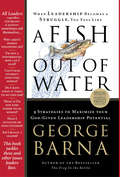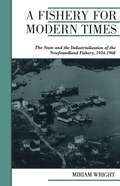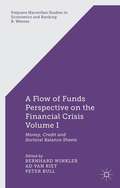- Table View
- List View
A Fight for the Soul of Public Education: The Story of the Chicago Teachers Strike
by Robert Bruno Steven AshbyIn reaction to the changes imposed on public schools across the country in the name of "education reform," the Chicago Teachers Union redefined its traditional role and waged a multidimensional fight that produced a community-wide school strike and transformed the scope of collective bargaining into arenas that few labor relations experts thought possible. Using interviews, first-person accounts, participant observation, union documents, and media reports, Steven K. Ashby and Robert Bruno tell the story of the 2012 strike that shut down the Chicago school system for seven days. A Fight for the Soul of Public Education takes into account two overlapping, parallel, and equally important stories. One is a grassroots story of worker activism told from the perspective of rank-and-file union members and their community supporters. Ashby and Bruno provide a detailed account of how the strike became an international cause when other teachers unions had largely surrendered to corporate-driven education reform. The second story describes the role of state and national politics in imposing educational governance changes on public schools and draconian limitations on union bargaining rights. It includes a detailed account of the actual bargaining process revealing the mundane and the transcendental strategies of both school board and union representatives.
A Financial Centre for Two Empires
by David C. Donald Jefferson P. Vanderwolk Wang Jiangyu David C. Donald Jefferson P. VanderwolkThis is a case study of legal transplant, economic development, cultural adaptation and political integration. Hong Kong's journey from British entrepôt to China's international financial centre is one of the most interesting legal stories of our time. But Hong Kong's future is even more interesting: will this region with British-origin institutions survive full integration into China and become its permanent international financial centre? Does Hong Kong have the legal infrastructure to compete effectively with Shanghai and Singapore, and even New York and London? A Financial Centre for Two Empires presents Hong Kong's story, examines its corporate economy and securities market, assesses its corporate, securities and tax laws for doctrinal soundness and appropriate remedies, and evaluates the quality of their enforcement empirically. It closes with a view of Hong Kong from the perspective of developments in Beijing and Shanghai, including an examination of the important political dimension.
A Financial Crisis Manual: Reflections And The Road Ahead (Palgrave Macmillan Studies in Banking and Financial Institutions)
by Platon Monokroussos Dimitrios Thomakos Konstantinos NikolopoulosA Financial History of China (Research Series on the Chinese Dream and China’s Development Path)
by Yunxian WuThis book summarizes the financial development of China from 1949 to 2019. This book divides the process of financial development during the past 70 years into five stages, focusing on the development characteristics of different parts of the financial institution system, including banks, securities, insurance, and other financial institutions, as well as the difficult growth process of financial markets (currency, capital, bond, and foreign exchange markets, etc.) from absence to existence, from small to large. This book objectively analyzes the achievements of China’s financial industry in the past 70 years and reveals the historical experience and enlightenment contained therein.
A Financial History of Modern U.S. Corporate Scandals: From Enron to Reform
by Jerry W MarkhamA definitive new reference on the major failures of American corporate governance at the start of the 21st century. Tracing the market boom and bust that preceded Enron's collapse, as well as the aftermath of that failure, the book chronicles the meltdown in the telecom sector that gave rise to accounting scandals globally. Featuring expert analysis of the Sarbanes-Oxley legislation that was adopted in response to these scandals, the author also investigates the remarkable market recovery that followed the scandals. An exhaustive guide to the collapse of the Enron Corporation and other financial scandals that erupted in the wake of the market downturn of 2000, this book is an essential resource for students, teachers and professionals in corporate governance, finance, and law.
A Financial History of Western Europe
by Charles P. KindlebergerThis is the first history of finance - broadly defined to include money, banking, capital markets, public and private finance, international transfers etc. - that covers Western Europe (with an occasional glance at the western hemisphere) and half a millennium. Charles Kindleberger highlights the development of financial institutions to meet emerging needs, and the similarities and contrasts in the handling of financial problems such as transferring resources from one country to another, stimulating investment, or financing war and cleaning up the resulting monetary mess. The first half of the book covers money, banking and finance from 1450 to 1913; the second deals in considerably finer detail with the twentieth century. This major work casts current issues in historical perspective and throws light on the fascinating, and far from orderly, evolution of financial institutions and the management of financial problems. Comprehensive, critical and cosmopolitan, this book is both an outstanding work of reference and essential reading for all those involved in the study and practice of finance, be they economic historians, financial experts, scholarly bankers or students of money and banking.This groundbreaking work was first published in 1984.
A Financial Revolution in the Habsburg Netherlands: Renten and Renteniers in the County of Holland, 1515-1565
by James D. TracyThis title is part of UC Press's Voices Revived program, which commemorates University of California Press’s mission to seek out and cultivate the brightest minds and give them voice, reach, and impact. Drawing on a backlist dating to 1893, Voices Revived makes high-quality, peer-reviewed scholarship accessible once again using print-on-demand technology. This title was originally published in 1985.
A Financial Theory of the Business Cycle: Net Present Value and Fractional Reserve Banking (Routledge Frontiers of Political Economy)
by Edward W. Fuller Warren YoungA Financial Theory of the Business Cycle presents a new approach to business cycle theory based on the net present value. The book develops a novel diagrammatic approach to illustrate how fractional reserve banking systematically distorts net-present-value calculations. In addition to providing fresh insights, the new diagrammatic approach provides a comparative framework that can be used to compare pre-existing theories, including those of John Maynard Keynes, Friedrich Hayek, Milton Friedman, and Robert E. Lucas, Jr.The net present value is the most important concept in the theory and practice of modern finance. As such, it is the proper framework for explaining the systematic financial losses that occur during the business cycle. Eugen von Böhm-Bawerk and Irving Fisher developed the modern theory of the net present value, and the financial theory of the business cycle developed in this book is rooted in their tradition. Although financial elements played a central role in their respective theories, Keynes and Hayek did not use the net present value. This failure created problems that still haunt business cycle theory today. This book addresses these problems and attempts to steer financial theories of the business cycle back to the course set by Böhm-Bawerk and Fisher.In addition to macroeconomists, this book will appeal to financial economists, money and banking experts, accountants, financial analysts, and businesspeople generally.
A Financing Facility for Low-Carbon Development in Developing Countries
by Philippe Ambrosi Ivan ZelenkoThis paper proposes an innovative financing mechanism, known as the Low Carbon Development Facility (LCDF) that would bring additional investment financing at concessional rates to unlock low carbon development projects in non-Annex 1 countries, increasing project-based emissions avoidance in these countries. The LCDF could be a modality of the Copenhagen Green Climate Fund to implement the financial pledges made by Annex 1 countries as a result of Copenhagen and post-COP15 negotiations to support projects, programs, policies and/or other activities in developing countries related to NAMAs. LCDF will not substitute the Global Environment Facility (GEF) and the Clean Technology Fund (CTF) and would rather support the innovative projects pioneered by these instruments.
A Fine Line
by Hartmut Esslingerpraise for a fine line "A breath of turbo-charged fresh air that doesn't regurgitate the ego-maniac CEO's selective memory or an outside expert's misinterpretations. Hartmut explains innovation through the lens of design, and it's about time we gained his valuable perspective. " -Guy Kawasaki, former chief evangelist, Apple and co-founder of Alltop. com "At Flextronics, we fell in love with Hartmut and frog, and their passion for bringing crazy great designs and design processes into the forefront of great product companies. We used their expertise to help our customers, many of the greatest product companies in the world, including Apple, HP, Cisco, Microsoft and others. It is a credit to Hartmut that in the midst of a shocking global recession, frog still sets quarterly revenue records. Theirs is a unique and fascinating story. " -Michael Marks, partner, Riverwood Capital LLC and former CEO, Flextronics "Hartmut's new approach to design is felt in every room in every house in every country and in every business around the world. He proved that thoughtful design is not only good for people but is good for business-and that both are interlinked. I have been fortunate to have observed first hand his impact at Sony, Apple, and HP?and have learned so much from him. He is an unsung hero of our times! A Fine Line is a must-read for designers and business people alike. " -Satjiv Chahil, senior vice president, Hewlett-Packard "A fascinating, breathtaking, and exemplary insight into a success story that never had so much topicality, and so much informative potential as just now. Esslinger offers an honest and encouraging portrait of the incredible power of the business and design alliance. A Fine Line is a handbook of design expertise and the art of business at its best, showing a variety of radical solutions and fresh new ideas. " -Professor Dr Peter Zec, president, ICSID and founder, red dot awards
A Fine Mess: A Global Quest for a Simpler, Fairer, and More Efficient Tax System
by T. R. ReidThe U.S. tax code is a total write-off. Crammed with loopholes and special interest provisions, it works for no one except tax lawyers, accountants, and huge corporations. Not for the first time, we have reached a breaking point. That happened in 1922, and again in 1954, and again in 1986. In other words, every thirty-two years. Which means that the next complete overhaul is due in 2018. But what should be in this new tax code? Can we make the U.S. tax system simpler, fairer, and more efficient? Yes, yes, and yes. Can we cut tax rates and still bring in more revenue? Yes. Other rich countries, from Estonia to New Zealand to the UK—advanced, high-tech, free-market democracies—have all devised tax regimes that are equitable, effective, and easy on the taxpayer. But the United States has languished. So byzantine are the current statutes that, by our government’s own estimates, Americans spend six billion hours and $10 billion every year preparing and filing their taxes. In the Netherlands that task takes a mere fifteen minutes! Successful American companies like Apple, Caterpillar, and Google effectively pay no tax at all in some instances because of loopholes that allow them to move profits offshore. Indeed, the dysfunctional tax system has become a major cause of economic inequality. In A Fine Mess, T. R. Reid crisscrosses the globe in search of the exact solutions to these urgent problems. With an uncanny knack for making a complex subject not just accessible but gripping, he investigates what makes good taxation (no, that’s not an oxymoron) and brings that knowledge home where it is needed most. Never talking down or reflexively siding with either wing of politics, T. R. Reid presses the case for sensible root-and-branch reforms with a companionable ebullience. This affects everyone. Doing our taxes will never be America's favorite pastime, but it can and should be so much easier and fairer.
A Finer Future: Creating an Economy in Service to Life
by John Fullerton Kate Raworth Anders Wijkman L. Lovins Stewart WallisHUMANITY is in a race with catastrophe. Is the future one of global warming, 65 million migrants fleeing failed states, soaring inequality, and grid-locked politics? Or one of empowered entrepreneurs and innovators building a world that works for everyone? <P><P>While the specter of collapse looms large, A Finer Future demonstrates that humanity has a chance - just - to thread the needle of sustainability and build a regenerative economy through a powerful combination of enlightened entrepreneurialism, technology, and innovative policy. <P><P>The authors - world leaders in business, economics, and sustainability - gather the evidence, outline the principles of a regenerative economy, and detail a policy roadmap to achieving it, including: <P><P>Transforming finance and corporations Reimagining energy, agriculture, and the nature of how we work, Enhancing human well-being, Delivering a world that respects ecosystems and human community. <P><P>Charting the course to a regenerative economy is the most important work facing humanity and A Finer Future provides the essential blueprint for business leaders, entrepreneurs, environmentalists, politicians, policymakers, and others working to create a world that works for people and the planet. L. HUNTER LOVINS is Time Magazine's Millennium Hero for the Planet, President and Founder of Natural Capitalism Solutions, and co-author of The Way Out and the best-selling Natural Capitalism. STEWART WALLIS is Executive Chair of the Wellbeing Economy Alliance; Honorary Professor at Lancaster University; and former Executive Director of the New Economics Foundation. He now leads a new initiative to create a global wellbeing economic movement. ANDERS WIJKMAN is Co-President of the Club of Rome; Chair of Climate-KIC, the largest publicprivate partnership for climate innovation in the EU; and author of Bankrupting Nature and Come On! JOHN FULLERTON is founder and President of Capital Institute, and a former Managing Director at JP Morgan. He is also the author of Regenerative Capitalism: How Universal Principles and Patterns Will Shape our New Economy .
A Fintech em um Flash
by Fernanda Belokurows Agustin RubiniFinalmente um guia explicativo de tecnologia financeira! A indústria de tecnologia de serviços financeiros está crescendo, com investimentos superiores a US$20 bilhões só no ano passado. Existem mais de 5000 startups de fintech operando e 50 delas já alcançaram uma avaliação de bilhões de dólares. O alcance deste mercado vai até os pagamentos online. A tecnologia financeira promete mudar a forma como gerimos o nosso dinheiro online, quebrando barreiras no cenário do setor de serviços financeiros. Compreender suas muitas facetas é a chave para nadar nas águas das nuances complexas desta indústria global. O livro “A Fintech em um Flash” é o seu guia explicativo sobre o futuro do setor bancário e de seguros. O livro pretende identificar os conceitos-chave de forma a ajudá-lo a entender todos os aspectos, a fim de que você possa aproveitar essas novas tecnologias. Dentro, você encontrará uma série de tópicos interessantes, como pagamentos online, financiamento coletivo, bancos challengers, seguros online, empréstimos digitais, Big Data e comércio eletrônico. Isso irá fazer você repensar a maneira como administra o seu dinheiro online e até mesmo encontrar novas formas de realizar pagamentos online. Abrangente, organizado e detalhado, este guia é a sua fonte de acesso para tudo o que você precisa para navegar com confiança neste cenário em constante mudança desta indústria em expansão.
A First Course in Machine Learning
by Mark GirolamiA First Course in Machine Learning covers the core mathematical and statistical techniques needed to understand some of the most popular machine learning algorithms. The algorithms presented span the main problem areas within machine learning: classification, clustering and projection. The text gives detailed descriptions and derivations for a smal
A First Course in Machine Learning
by Mark Girolami Simon Rogers"A First Course in Machine Learning by Simon Rogers and Mark Girolami is the best introductory book for ML currently available. It combines rigor and precision with accessibility, starts from a detailed explanation of the basic foundations of Bayesian analysis in the simplest of settings, and goes all the way to the frontiers of the subject such as infinite mixture models, GPs, and MCMC."—Devdatt Dubhashi, Professor, Department of Computer Science and Engineering, Chalmers University, Sweden "This textbook manages to be easier to read than other comparable books in the subject while retaining all the rigorous treatment needed. The new chapters put it at the forefront of the field by covering topics that have become mainstream in machine learning over the last decade."—Daniel Barbara, George Mason University, Fairfax, Virginia, USA "The new edition of A First Course in Machine Learning by Rogers and Girolami is an excellent introduction to the use of statistical methods in machine learning. The book introduces concepts such as mathematical modeling, inference, and prediction, providing ‘just in time’ the essential background on linear algebra, calculus, and probability theory that the reader needs to understand these concepts."—Daniel Ortiz-Arroyo, Associate Professor, Aalborg University Esbjerg, Denmark "I was impressed by how closely the material aligns with the needs of an introductory course on machine learning, which is its greatest strength…Overall, this is a pragmatic and helpful book, which is well-aligned to the needs of an introductory course and one that I will be looking at for my own students in coming months."—David Clifton, University of Oxford, UK "The first edition of this book was already an excellent introductory text on machine learning for an advanced undergraduate or taught masters level course, or indeed for anybody who wants to learn about an interesting and important field of computer science. The additional chapters of advanced material on Gaussian process, MCMC and mixture modeling provide an ideal basis for practical projects, without disturbing the very clear and readable exposition of the basics contained in the first part of the book." —Gavin Cawley, Senior Lecturer, School of Computing Sciences, University of East Anglia, UK "This book could be used for junior/senior undergraduate students or first-year graduate students, as well as individuals who want to explore the field of machine learning…The book introduces not only the concepts but the underlying ideas on algorithm implementation from a critical thinking perspective."—Guangzhi Qu, Oakland University, Rochester, Michigan, USA
A First Course in Optimization
by Charles ByrneGive Your Students the Proper Groundwork for Future Studies in OptimizationA First Course in Optimization is designed for a one-semester course in optimization taken by advanced undergraduate and beginning graduate students in the mathematical sciences and engineering. It teaches students the basics of continuous optimization and helps them better
A First Course in Quality Engineering: Integrating Statistical and Management Methods of Quality, Third Edition
by K. S. Krishnamoorthi V. Ram Krishnamoorthi Arunkumar PennathurThe third edition of this textbook improves on the strengths of the earlier editions both in content and presentation. Of the important features of the textbook is the inclusion of examples from real-world to illustrate use of quality methods in problem solving. A thorough revision is made of the text to make all chapters suitable for self-study as well.
A First Course in Quantitative Finance
by Thomas MazzoniThis new and exciting book offers a fresh approach to quantitative finance and utilizes novel new features, including stereoscopic images which permit 3D visualization of complex subjects without the need for additional tools. Offering an integrated approach to the subject, A First Course in Quantitative Finance introduces students to the architecture of complete financial markets before exploring the concepts and models of modern portfolio theory, derivative pricing, and fixed-income products in both complete and incomplete market settings. Subjects are organized throughout in a way that encourages a gradual and parallel learning process of both the economic concepts and their mathematical descriptions, framed by additional perspectives from classical utility theory, financial economics, and behavioral finance. Suitable for postgraduate students studying courses in quantitative finance, financial engineering, and financial econometrics as part of an economics, finance, econometric, or mathematics program, this book contains all necessary theoretical and mathematical concepts and numerical methods, as well as the necessary programming code for porting algorithms onto a computer.
A First Course in Quantitative Finance
by Thomas MazzoniThis new and exciting book offers a fresh approach to quantitative finance and utilises novel features, including stereoscopic images which permit 3D visualisation of complex subjects without the need for additional tools. Offering an integrated approach to the subject, A First Course in Quantitative Finance introduces students to the architecture of complete financial markets before exploring the concepts and models of modern portfolio theory, derivative pricing and fixed income products in both complete and incomplete market settings. Subjects are organised throughout in a way that encourages a gradual and parallel learning process of both the economic concepts and their mathematical descriptions, framed by additional perspectives from classical utility theory, financial economics and behavioural finance. Suitable for postgraduate students studying courses in quantitative finance, financial engineering and financial econometrics as part of an economics, finance, econometric or mathematics program, this book contains all necessary theoretical and mathematical concepts and numerical methods, as well as the necessary programming code for porting algorithms onto a computer.
A First Course in Structural Equation Modeling
by George A. Marcoulides Tenko RaykovIn this book, authors Tenko Raykov and George A. Marcoulides introduce students to the basics of structural equation modeling (SEM) through a conceptual, nonmathematical approach. For ease of understanding, the few mathematical formulas presented are used in a conceptual or illustrative nature, rather than a computational one. Featuring examples from EQS, LISREL, and Mplus, A First Course in Structural Equation Modeling is an excellent beginner’s guide to learning how to set up input files to fit the most commonly used types of structural equation models with these programs. The basic ideas and methods for conducting SEM are independent of any particular software. Highlights of the Second Edition include: • Review of latent change (growth) analysis models at an introductory level • Coverage of the popular Mplus program • Updated examples of LISREL and EQS • A CD that contains all of the text’s LISREL, EQS, and Mplus examples. A First Course in Structural Equation Modeling is intended as an introductory book for students and researchers in psychology, education, business, medicine, and other applied social, behavioral, and health sciences with limited or no previous exposure to SEM. A prerequisite of basic statistics through regression analysis is recommended. The book frequently draws parallels between SEM and regression, making this prior knowledge helpful.
A First-Class Catastrophe: The Road to Black Monday, the Worst Day in Wall Street History
by Diana B. HenriquesThe definitive account of the crash of 1987, a cautionary tale of how the U.S. financial system nearly collapsed--from the bestselling author of The Wizard of LiesMonday, October 19, 1987, was by far the worst day in Wall Street history. The market fell 22.6 percent – almost twice as bad as the worst day of 1929 – equal to a one-day loss of nearly 5,000 points today.Black Monday was more than seven years in the making and threatened nearly every U.S. financial institution. Drawing on superlative archival research and dozens of original interviews Diana B. Henriques weaves a tale of missed opportunities, market delusions, and destructive actions that stretched from the “silver crisis” of 1980 to turf battles in Washington, a poisonous rivalry between the New York Stock Exchange and the Chicago Mercantile Exchange, and the almost-fatal success of two California professors whose idea for reducing market risk spun terribly out of control. As the story hurtles forward, the players struggle to forestall a looming market meltdown and unexpected heroes step in to avert total disaster.For thirty years, investors, regulators, and bankers have failed to heed the lessons of 1987, even as the same patterns have resurfaced, most spectacularly in the financial crisis of 2008. A First-Class Catastrophe offers a new way of looking not only at the past, but at our financial future as well.
A Fish Out of Water
by George BarnaBarna unveils the results of years of research and hundreds of interviews, and emerges with a new definition of what leadership is--and isn't.
A Fishery for Modern Times
by Miriam WrightIn the early 1990s, the northern cod populations off the coast of Newfoundland had become so depleted that the federal government placed a moratorium on commercial fishing. The impact was devastating, both for Newfoundland's economy and for local fishing communities. Today, although this natural resource - exploited commercially for over 500 years - appears to be returning in diminished numbers, many fisheries scientists and fishers question whether the cod will ever return to its former abundance.In A Fishery for Modern Times, Miriam Wright argues that the recent troubles in the fishery can be more fully understood by examining the rise of the industrial fishery in the mid-twentieth century. The introduction of new harvesting technologies and the emergence of 'quick freezing', in the late 1930s, eventually supplanted household production by Newfoundland's fishing families. While the new technologies increased the amount of fish caught in the northwest Atlantic, Wright argues that the state played a critical role in fostering and financing the industrial frozen fish sector. Many bureaucrats and politicians, including Newfoundland's premier, Joseph Smallwood, believed that making the Newfoundland fishery 'modern', with centralization, technology, and expertise, would transform rural society, solving deep-seated economic and social problems.A Fishery for Modern Times examines the ways in which the state, ideologies of development, and political, economic, and social factors, along with political actors and fishing company owners, contributed to the expansion of the industrial fishery from the 1930s through the 1960s. While the promised prosperity never fully materialized, the continuing reliance on approaches favouring high-tech, big capital solutions put increasing pressure on cod populations in the years that followed. As Wright concludes, 'We can no longer afford to view the fisheries resources as "property" of the state and industry, to do with it as they choose. That path had led only to devastation of the resource, economic instability, and great social upheaval.'
A Fitting Test: Real World Strategies for Moving from Innovation to Application, Protecting Intellectual Property, and Avoiding Imitation
by Jay Barney Patricia Gorman Clifford"What I Didn't Learn in Business School" is a fictional account that follows new consultant Justin Campbell as he joins an elite consulting team hired by a chemical firm to assess the potential of a newly developed technology. As Justin and his team are given a glimpse into the many possible applications for this new technology, he realizes the gravity of their mandate. This is no business school exercise; the recommendation they make about which strategic direction their client should choose will determine the future of the company. In this chapter, Justin and his team get to work testing ideas, evaluating the risks of imitation by competitors. This chapter was originally published as Chapter 10 of "What I Didn't Learn in Business School: How Strategy Works in the Real World."
A Flow-of-funds Perspective On The Financial Crisis
by Peter Bull Bernhard Winkler Ad Van RietProvides a comprehensive overview of a broad range of uses of the flow of funds within the central bank community as well as in the academic field, prepared by international experts in the field. Based on the crisis experience, it offers an overview of lessons for macrofinancial analysis and financial stability.
